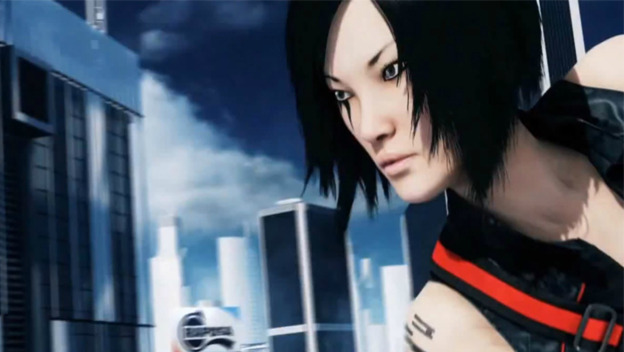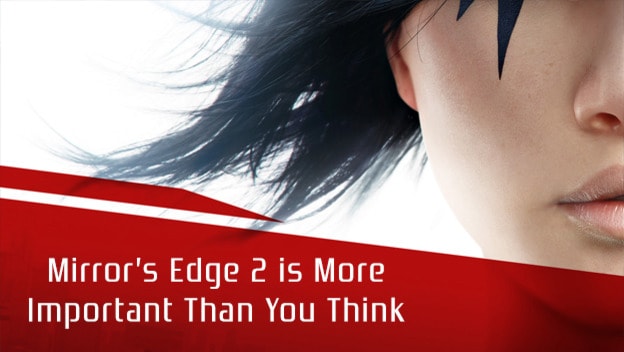Developer DICE’s E3 2013 presentation primarily focused on Battlefield 4 , but they were kind enough to throw in a glimpse of the long-awaited sequel Mirror’s Edge 2 at the tail end. Sure, the reveal footage showed us approximately none percent of the game, but the fact that a cult classic like Mirror’s Edge would receive a sequel at all—and on next-gen systems, at that—was good enough for most. However, the timing and nature of the reveal alone show that the game is destined to be an enormous success for DICE. It may not (okay, let’s be serious: will not) crack Battlefield 4’s 14-million-units-sold-at-launch prediction , but Mirror’s Edge 2 has plenty going for it.
As a project, Mirror’s Edge 2 is fundamentally weird. It’s a sequel to a 2008 niche title (which did sell roughly 2.2 million copies, mind you) that will not only be crossing console generations, but shifting styles entirely. Although it’s been promised that the first-person perspective that made the original’s platforming-meets-parkour gameplay so engaging will remain, we’ve already learned that MI2 will follow the current fad among next-gen developers: It will be open world . Interestingly enough, these exact qualities make the game a unique and valuable opportunity for DICE.
In the games industry, releasing a sequel of any caliber comes with a prepackaged list of causes and effects. More often than not, the second or later installment of a series brings in better sales figures, simply because players will be anticipating the title. They also tend to have roomier budgets. On the other end of the spectrum, the release of a sequel effectively halts the sale of the original. We’ve seen this in nearly every recent release: Borderlands 2 overshadowed the original and led to a quick drop in its theretofore ubiquitous sales, Far Cry 3 did the same for Far Cry 2 , and so on. However, one of the best examples of this trend in recent memory is the Souls franchise from FomSoftware.
Back in 2009, the PlayStation 3 was blessed with the release of Demon’s Souls , an ostensibly difficult action-RPG. Much like Mirror’s Edge , Demon’s Souls is a strange game, in both style and structure. Stranger still, however, is the fact that Demon’s Souls saw consistent annual growth for three years following its release. This is incredibly rare for any game, much less one of non-triple-A status. In most cases, software sales figures look like a bad rollercoaster: an enormous spike at the beginning followed by a rapid decline which quickly flattens out. Demon’s Souls did the exact opposite.
This is where sequels come into the picture. As detailed by VGchartz , sales of Demon’s Souls peaked in 2011. Guess what else happened in 2011? Dark Souls , the spiritual sequel to Demon’s Souls , was released. It stands to reason to assume that the launch of Dark Souls , which has sold nearly twice as many units as its predecessor in roughly one-fourth of the time, stimulated the sale of Demon’s Souls to some degree, for reasons similar to those stated above. And, as expected, in 2012, Demon’s Souls saw an acute decrease of nearly 77% in annual sales, from 265k to a meager 61k. Derivatively, we can assume that the popularity of Dark Souls drew the majority’s attention away from Demon’s Souls and that it fell off the radar as a result.
Clearly, the period immediately surrounding a sequel’s release can be a shot in the arm for the original, as new players tend to run out and buy number one either in conjunction with, or in anticipation of, the coming successor. This is particularly valuable in the case of MI2 , simply because there’s no drawback. Sales for Mirror’s Edge have all but plateaued, which means DICE won’t be seeing an acute decline of 77%; they won’t be losing 200k annual sales on the original. Moreover, the hype and attention generated by Mirror’s Edge 2 can only benefit DICE; it’s a no-strings-attached sequel.

Equally important is that MI2 will be open world. Putting genre preference aside, the shift to an open-world playstyle is a necessary change, because it puts a competing title on EA’s next-gen lineup. With Destiny , Grand Theft Auto V , Elder Scrolls Online , The Division , and more on the way, not offering an open-world title can easily be seen as a weakness. The release of Mirror’s Edge 2 will fix that.
And of course, and arguably most importantly, is the fact that a game as aesthetically distinguished, stylized, and outright unorthodox as Mirror’s Edge will be getting a proper sequel. The advantageous timing is just icing on the cake. But it’s some damn impressive icing.
